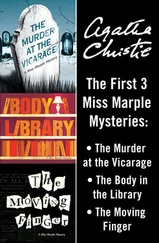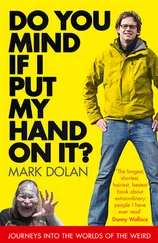Robert Monroe - Journeys out of the body, Practical Guidebook
Здесь есть возможность читать онлайн «Robert Monroe - Journeys out of the body, Practical Guidebook» весь текст электронной книги совершенно бесплатно (целиком полную версию без сокращений). В некоторых случаях можно слушать аудио, скачать через торрент в формате fb2 и присутствует краткое содержание. Жанр: Старинная литература, на английском языке. Описание произведения, (предисловие) а так же отзывы посетителей доступны на портале библиотеки ЛибКат.
- Название:Journeys out of the body, Practical Guidebook
- Автор:
- Жанр:
- Год:неизвестен
- ISBN:нет данных
- Рейтинг книги:5 / 5. Голосов: 1
-
Избранное:Добавить в избранное
- Отзывы:
-
Ваша оценка:
- 100
- 1
- 2
- 3
- 4
- 5
Journeys out of the body, Practical Guidebook: краткое содержание, описание и аннотация
Предлагаем к чтению аннотацию, описание, краткое содержание или предисловие (зависит от того, что написал сам автор книги «Journeys out of the body, Practical Guidebook»). Если вы не нашли необходимую информацию о книге — напишите в комментариях, мы постараемся отыскать её.
Journeys out of the body, Practical Guidebook — читать онлайн бесплатно полную книгу (весь текст) целиком
Ниже представлен текст книги, разбитый по страницам. Система сохранения места последней прочитанной страницы, позволяет с удобством читать онлайн бесплатно книгу «Journeys out of the body, Practical Guidebook», без необходимости каждый раз заново искать на чём Вы остановились. Поставьте закладку, и сможете в любой момент перейти на страницу, на которой закончили чтение.
Интервал:
Закладка:
minute.
As long work with the techniques is implied, one should not torment oneself if one does not want to do something, otherwise one may quickly tire out. Everything should be a pleasure to do and not cause any excessive emotional tension.
THE FREE-FLOATING STATE OF MIND
There are almost infinite descriptions of direct entry techniques offered in literature, stories, on the Internet, and at seminars.
Sometimes, one description fundamentally differs from another. In the majority of cases, however, common threads exist that unite almost every description of a particular technique: short lapses in consciousness, memory gaps, and drifting in and out of sleep, all of which are hallmarks of the free-floating state of mind. After any of these phenomena occur, all manner of unusual pre-phase or phase sensations arise.
Lapses in consciousness may last for seconds, several minutes, or more than an hour. They may range from a simple loss of consciousness to entrance into a full-fledged dream. They may be singular and rare, or may occur several times over the course of a minute. Whatever a lapse entails, the mind attains a mode of operating that is ideal for phase experimentation, provided the practitioner is able to refrain from deep sleep and quickly return to a conscious, waking state.
Not every lapse of consciousness leads to the phase. The lapse must have sufficient depth to be effective. Thus, with every unsuccessful lapse, another deeper lapse should be incurred.
The primary practical drawback of the free-floating state of mind is the possibility of falling completely asleep during lapses instead of only temporarily dipping into sleep. Techniques are definitely necessary to ensure the desired result. Such techniques more or less fulfill an auxiliary function, and thus one need not be strict about them.
Interesting Fact!
It does not matter which direct technique is used; as long as it leads to lapses in consciousness, success is possible.
When performing the variations of the techniques, a practitioner can begin to vacillate between full alertness and complete asleep, coming to, and then nodding off again.
To avoid falling asleep requires a strong desire to return to wakefulness. This is accomplished by a strong resolve on the part of the practitioner, even if, while performing a direct technique, drifting in and out of sleep occurs. The practitioner must firmly assert that at the moment consciousness tapers off, awakening will immediately occur.
On the other hand, if lapses do not occur, and are replaced by complete alertness, the following tricks of the trade may help: full concentration on mental actions or, conversely, musing and daydreaming in parallel with the technique being used. It should be noted that these are only effective at the initial stages of working with direct techniques since such techniques have a strong sleep-inducing effect.
If direct techniques do not lead to light sleep or singular lapses after a long period of regular practice, then it must be assumed that the practitioner is dealing with some appreciable error in technique or in the length of performance.
Regulating the number of lapses that occur may be modified by body position during practice or by changing the variation used while performing techniques.
Entering the phase with a free-floating state of mind most often occurs as the result of three key factors. First, one technique or another may begin to work well during a lapse. Second, nearness to the phase may unexpectedly manifest itself through sounds or vibration after a lapse. During this, transitioning to techniques that correspond to the above symptoms (listening in, straining the brain) may be applied. Third, when exiting a lapse, it is sometimes easy to separate or quickly find a working technique by paying attention to initial indicators.
Lapses in consciousness are not bound to occur in 100% of cases.
However, striving to achieve lapses plays a very important role since they are not always perceivable, and a lapse occurrence is not always obvious. They can be very short in duration or shallow. Or, they may not occur at all. Nonetheless, properly applied techniques to produce lapses may give entrance to the phase.
AUXILIARY FACTORS
Using direct techniques in the evening or in the middle of the night take advantage of the body’s natural state of fatigue and for practical purposes this natural tiredness may be amplified. For example, direct techniques more easily lead to success if the practitioner is considerably sleep-deprived. Moreover, in such a state, inducing a free-floating state of mind may be forgone. The most important thing is simply not to fall asleep immediately, in addition to employing the appropriate variations with the techniques. Willful deprivation of sleep is torturous and useless even though great results may be achieved by an experienced and knowledgeable practitioner in a severely fatigued state. Beginners are better off approaching all forms of practice in a natural, balanced way.
An intense longing sleep is not limited to long periods of sleep deprivation; physical and emotional fatigues also play important roles. In that case, the most important thing is not to fall asleep when performing the techniques, and thus one must select a more active technique variation than usual.
STRATEGY FOR ACTION
Direct techniques seldom produce quick and clear results, unlike entering the phase via becoming conscious while dreaming or through the use of indirect techniques. At first, direct techniques produce sporadic results, which is why the path of practice should not begin with direct techniques hoping for fast results. It is better to systematically practice a technique, working toward mastery on a consistent basis.
There is no cause for worry if results are achieved after a month of daily attempts. A continual effort to analyze practice and improve should be the primary focus because failures are always caused by distinguishable mistakes.
Although difficulties may arise with direct techniques, one should never abandon what worked until then (i.e. indirect techniques), as this could temporarily deprive one of the experience that one has gained so far.
A combination of direct and indirect techniques should never be used during the course of a single day since this would be detrimental to practical focus and enthusiasm. It is better to separately perform each type of technique on different days. For example, direct techniques could be used before falling asleep during the workweek while indirect techniques may be practiced during the weekends when a practitioner has more chances to experiment using the extra opportunities to sleep.
TYPICAL MISTAKES
WITH DIRECT TECHNIQUES
• Assuming an incorrect position when lying down.
• Performing direct techniques during the day when a practitioner is inexperienced, instead of in the evening or at night;
• Performing more than one attempt per day.
• Performing protracted relaxation before the techniques, even when this may play a negative role.
• Performing the techniques for too long when they should be exercised for no more than 20 minutes.
• Forgetting to affirm a strong intention of awakening during a lapse of consciousness.
• Lack of a free-floating state of mind. This is mandatory
• Falling asleep during lapses in a free-floating state of mind, instead of working toward multiple lapses while awakening.
• Forgetting separation techniques and awaiting some unknown event upon emergence from a lapse, instead of taking advantage of the moment.
• Excessively alternating the techniques in a primary repertoire, instead of testing them in a planned and systematic manner.
Читать дальшеИнтервал:
Закладка:
Похожие книги на «Journeys out of the body, Practical Guidebook»
Представляем Вашему вниманию похожие книги на «Journeys out of the body, Practical Guidebook» списком для выбора. Мы отобрали схожую по названию и смыслу литературу в надежде предоставить читателям больше вариантов отыскать новые, интересные, ещё непрочитанные произведения.
Обсуждение, отзывы о книге «Journeys out of the body, Practical Guidebook» и просто собственные мнения читателей. Оставьте ваши комментарии, напишите, что Вы думаете о произведении, его смысле или главных героях. Укажите что конкретно понравилось, а что нет, и почему Вы так считаете.










